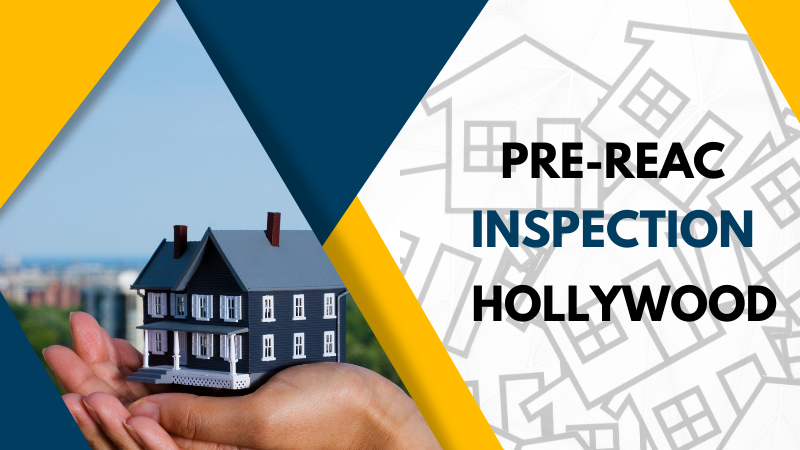Maintaining compliance with the Real Estate Assessment Center (REAC) standards is crucial for property owners, especially those managing HUD-insured properties. One of the most effective ways to ensure readiness for a REAC inspection is through a pre-REAC inspection. This proactive approach helps identify and address potential issues before they can impact your REAC score, ensuring your property meets the required standards. In this blog post, we’ll delve into what a pre-REAC inspection is, why it’s important, and how to prepare for it. We’ll also explore common issues identified during these inspections and provide actionable tips to help you achieve a higher REAC score.
Introduction to Pre-REAC Inspection
Definition of Pre-REAC Inspection
A Pre-REAC inspection is a preliminary assessment of a property, conducted before the official REAC inspection. The purpose of this inspection is to identify and rectify any potential issues that could negatively impact the REAC score. By conducting a thorough pre-REAC inspection, property owners can proactively address deficiencies, ensuring the property meets all necessary standards.
Purpose of Pre-REAC Inspection
The primary goal of a pre-REAC inspection is to prepare the property for the official REAC inspection, which determines the property’s compliance with HUD standards. A high REAC score is crucial as it directly impacts the property’s eligibility for HUD funding and other benefits. A low score can lead to increased scrutiny, financial penalties, or even the loss of funding.
Overview of the REAC Program
The Real Estate Assessment Center (REAC) is a division of the U.S. Department of Housing and Urban Development (HUD). REAC’s mission is to ensure that HUD-assisted properties are safe, decent, and sanitary. The REAC inspection evaluates the physical condition of properties using a standardized scoring system. Properties are inspected based on a set of criteria that include structural integrity, safety, and overall maintenance.
Importance of Compliance with REAC Standards
Compliance with REAC standards is essential for maintaining the property’s status as HUD-insured. A low REAC score can result in increased oversight, mandatory corrective actions, and the potential loss of HUD funding. Therefore, conducting a pre-REAC inspection is a vital step in ensuring compliance and avoiding these consequences.
Key Components of a Pre-REAC Inspection

A pre-REAC inspection covers various aspects of a property, focusing on areas that could affect the REAC score. The inspection typically includes:
1. Exterior Inspections
The exterior of the property is the first area of focus during a pre-REAC inspection. Inspectors will examine the building’s structure, walkways, parking areas, and landscaping. Issues such as roof leaks, foundation cracks, or damaged sidewalks are identified and prioritized for repair.
2. Interior Inspections
Interior inspections involve assessing common areas, such as lobbies and hallways, as well as individual units or apartments. Inspectors look for issues that could affect the health and safety of residents, such as damaged flooring, mold, or non-functional smoke detectors.
3. Mechanical Systems
Mechanical systems, including HVAC, plumbing, and electrical systems, are also inspected. These systems must be in good working order to pass the REAC inspection. Any deficiencies found during the pre REAC inspection are noted for immediate repair.
Benefits of Conducting a Pre-REAC Inspection
Conducting a pre REAC inspection offers several benefits that can help property owners avoid costly penalties and maintain compliance with HUD standards.
Improved REAC Scores
By identifying and addressing potential issues before the official REAC inspection, property owners can significantly improve their REAC scores. A high score not only ensures compliance but also enhances the property’s reputation and tenant satisfaction.
Identification of Potential Issues
A pre-REAC inspection allows property owners to identify issues that may not be immediately apparent. These can include structural deficiencies, safety violations, or maintenance oversights that could negatively impact the REAC score.
Cost-Effective Maintenance Planning
By conducting a pre-REAC inspection, property owners can prioritize repairs and maintenance tasks based on the severity of the issues identified. This proactive approach allows for more efficient use of resources and can prevent costly emergency repairs in the future.
Enhanced Tenant Satisfaction and Safety
Addressing issues identified during a pre-REAC inspection can improve the overall safety and livability of the property. This not only ensures compliance with REAC standards but also enhances tenant satisfaction and reduces turnover rates.
Steps Involved in a pre REAC Inspection

Conducting a successful Pre-REAC inspection involves several key steps, from preparation to post-inspection follow-up.
1. Preparation
Before conducting a pre REAC inspection, it’s essential to review past REAC inspection reports and gather any necessary documentation. This includes maintenance records, inspection checklists, and tenant feedback.
2. Conducting the Inspection
The inspection can be conducted by a professional inspector or by an in-house team. During the inspection, the focus should be on areas that are most likely to impact the REAC score, such as structural integrity, safety features, and mechanical systems. Using a comprehensive inspection checklist can ensure that no areas are overlooked.
3. Post-Inspection
After the inspection, the findings should be thoroughly analyzed. Property owners should prioritize repairs based on the severity of the issues identified and schedule follow-up inspections to ensure that all deficiencies have been addressed.
Common Issues Identified in pre REAC Inspections
A pre REAC inspection often reveals several common issues that, if left unaddressed, could negatively impact the REAC score.
1. Structural Deficiencies
Structural issues, such as roof leaks, foundation cracks, or deteriorating facades, are often identified during a pre REAC inspection. These issues must be addressed promptly to avoid penalties during the official REAC inspection.
2. Safety Violations
Safety violations, such as non-functional smoke detectors, blocked exits, or inadequate lighting, are critical concerns during a pre REAC inspection. These violations can pose significant risks to tenants and must be rectified immediately.
3. Maintenance Oversights
Routine maintenance issues, such as damaged flooring, plumbing leaks, or faulty electrical systems, are also common findings during a pre-REAC inspection. Addressing these issues promptly can prevent more significant problems in the future.
How to Prepare for a REAC Inspection After a Pre-REAC Inspection

Once the Pre-REAC inspection is complete and all identified issues have been addressed, property owners should take the following steps to prepare for the official REAC inspection:
Addressing Identified Issues
Ensure that all issues identified during the pre-REAC inspection have been fully addressed. This may involve completing necessary repairs, conducting follow-up inspections, and documenting the work done.
Engaging Tenants in the Process
Informing tenants about the upcoming REAC inspection and any potential disruptions is crucial. Engaging tenants in the process can also help identify additional issues that may not have been captured during the pre-REAC inspection.
Conducting a Final Walkthrough
A final walkthrough should be conducted to ensure that the property is in top condition for the REAC inspection. This walkthrough should focus on areas that are most likely to be scrutinized during the inspection.
Preparing for the REAC Inspection Day
On the day of the REAC inspection, ensure that all areas of the property are accessible, clean, and in good repair. Having all necessary documentation, such as maintenance records and inspection reports, readily available can also help streamline the inspection process.
FAQs About Pre-REAC Inspections
What is the difference between a pre-REAC and a REAC Inspection?
A pre-REAC inspection is a preliminary assessment conducted by the property owner to identify and address potential issues before the official REAC inspection. The REAC inspection, conducted by HUD inspectors, evaluates the property’s compliance with HUD standards.
How often should a pre-REAC inspection be conducted?
It’s recommended to conduct a pre-REAC inspection annually or several months before the scheduled REAC inspection. This allows sufficient time to address any identified issues.
Can property owners perform their pre-REAC inspections?
Yes, property owners can perform their pre-REAC inspections. However, hiring a professional inspector can provide a more thorough assessment and increase the likelihood of a higher REAC score.
What are the penalties for non-compliance with REAC standards?
Non-compliance with REAC standards can result in financial penalties, increased oversight, mandatory corrective actions, and the potential loss of HUD funding.
How long does a pre-REAC inspection typically take?
The duration of a pre-REAC inspection depends on the size and condition of the property. It can range from a few hours to several days for larger properties.
Conclusion
A pre-REAC inspection is an essential tool for property owners looking to maintain compliance with REAC standards and achieve high inspection scores. By proactively identifying and addressing potential issues, property owners can ensure their properties are safe, well-maintained, and eligible for continued HUD funding.
Contact Us
If you’re a property owner looking to prepare for an upcoming REAC inspection, consider scheduling a pre-REAC inspection with NSPIRE Experts. Our team of experienced professionals can help you identify and address potential issues, ensuring your property is ready for the official inspection. Contact us today to request a quote or schedule a consultation and take the first step toward REAC compliance.
